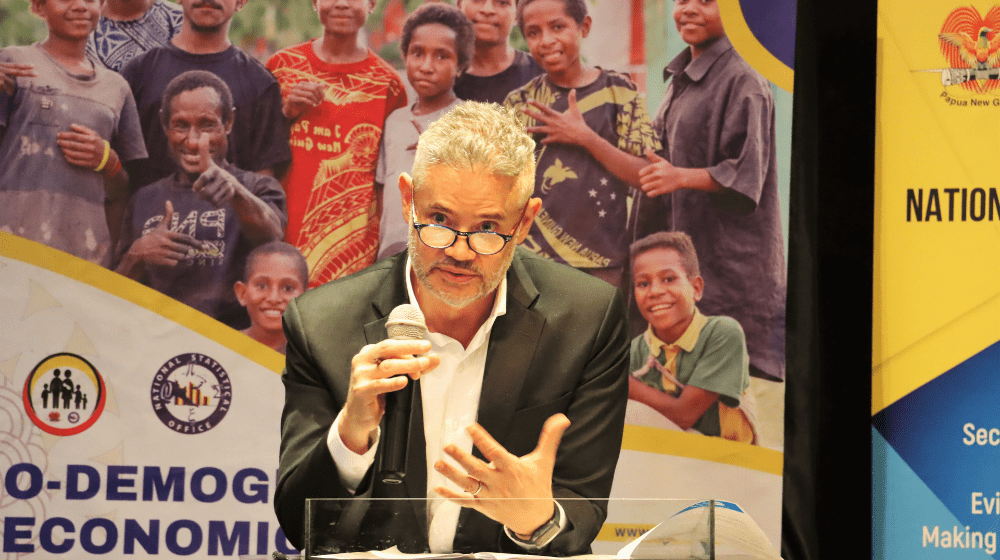According to the results of a new survey, 9% of Papua New Guinean girls aged 15-19 are married, compared to just 0.9% of boys in the same age group. 22% of girls who are not attending school cite marriage as their reason for discontinuing their education. As early marriage and adolescent pregnancy can not only disrupt a girl’s education, but pose significant health risks, these findings are a clear indicator of the gender inequality in the country.
However, women and girls are not the only group being left behind, with results demonstrating a significant divide between urban and rural households’ access to technology.
The survey is a wake-up call to ensure that development initiatives are inclusive of all peoples in Papua New Guinea.
The Socio-Demographic and Economic Survey asked 5,000 households questions on demographics, education, employment, sanitation, and energy sources. The results provide updated statistics of the livelihoods of Papua New Guinean households and key indicators on progress towards the Sustainable Development Goals and PNG’s Vision 2050. The full report, including analysis of the results, will be available in 2023.
“The SDES, like the DHS, is a snapshot of how the country is progressing towards its goals,” said United Nations Resident Coordinator Richard Howard. “Papua New Guinea needs more data for us to see what is working, where resources are needed, and how we can strategically invest in ensuring no one is left behind.”
Mr Howard also highlighted the need for further studies to be undertaken to provide comprehsensive insights on the economic position of households.
“Labour force participation is one area in which future surveys can provide us with more detailed information.”
“I thank the National Statistical Office and the Australian Government for their partnership with UNFPA on strengthening the data available for strategic planning and investment in PNG.”
Key Findings
- School attendance has increased over the past 10 years, with 77% of the population over 5 years having attended school, compared to 57% in 2011.
- Literacy has increased from 67.6% in 2011 to 85.7% in 2022. This includes significant gains for women and girls, with literacy increasing from 64% to 83.2%.
- Open defecation has decreased from 16.7% as of the 2016-17 DHS to 13.6% in 2022.
- 71% of households have access to a mobile phone compared to 56.3% in 2018.
- More households are using improved water sources, such as rainwater or protected springs.
- Papua New Guineans are living longer, with the proportion of over 65’s increasing from 2.6% in 2011, to 3.4% in 2022.
- The percentage of households who are renting has increased from 4.9% in 2011 to 8.1% in 2022.
- 24% of Papua New Guineans have moved to their current residence from another district.
Improving Data Collection and Utilisation
The Socio-Demographic and Economic Survey marks the first time tablets have been used for enumeration in a national household survey. This computer-assisted personal interview (CAPI) technology enables faster data collection and reduces errors, leading to more efficient enumeration and processing for large, national data sets.
In 2022, UNFPA supported the National Statistical Office with tablets and is committed to ongoing capacity building for the NSO on industry-leading REDATAM data processing software. In 2023, UNFPA and NSO are completing a series of data literacy workshops across all provinces to encourage utilisation of updated data sets in planning. Workshops have been completed in Western Highlands, Jiwaka, East Sepik, West Sepik, and Manus.


